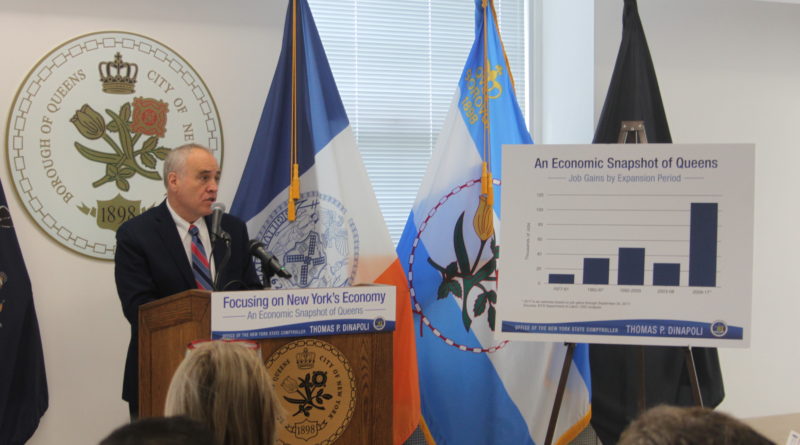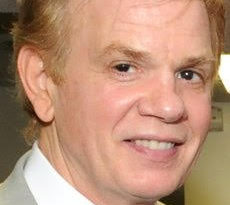Comptroller releases report on “booming” Queens economy
BY BENJAMIN FANG
While Queens, with its trademark diversity, may be known as the world’s borough, a new report confirms it’s also a borough of tremendous economic and population growth.
According to a newly released economic snapshot by State Comptroller Thomas DiNapoli, there are more residents, jobs and businesses in Queens than at any time in its history.
“This is really a historic time for the borough,” DiNapoli said. “We see the Queens economy is soaring.”
The borough added 110,500 private-sector jobs between 2009 and 2017, 10 times more than were lost during the Great Recession. The greatest gains, responsible for two-thirds of the job growth, were in the health care, leisure and hospitality, and the business services and retail industries.
The record job growth has also cut unemployment to a paltry 3.7 percent in March 2018, the comptroller said. During the peak of the recession, unemployment in Queens was 8.6 percent.
“It keeps getting better and better,” DiNapoli said.
Since 2009, the number of businesses in the borough has gone up 22 percent, faster than the citywide rate of 17 percent. In 2016, business sales reached a record-high $12.9 billion, an increase of 54 percent since 2009.
The two Queens airports, LaGuardia and JFK, played a big role in those job gains. Together, they employed 49,000 people and contributed $64.4 billion in economic activity in both New York and New Jersey.
Queens accounted for 58 percent of all transportation jobs in New York City, and 96 percent of air transportation jobs. The comptroller noted that both airports are undergoing major upgrades, which will bring even more jobs to the region.
Between 2011 and 2017, there was a 49 percent increase in construction permits. Last year, construction employment grew by one-third to reach a record-high 52,700 jobs, the most of any borough.
Howard Beach and Ozone Park saw the highest job growth, 43 percent, between 2009 and 2017. Other neighborhoods with strong gains were Flushing, Jackson Heights and Richmond Hill.
While the economy grew, the population of Queens also increased. According to the report, a record-high 2.4 million people live in Queens. Immigrants made up roughly 47 percent of the population, the second-highest share of any county behind Miami-Dade in Florida.
While immigrants represented more than half of the borough’s workforce, they accounted for 69 percent of self-employed entrepreneurs.
The report also listed the racial breakdown of the borough. Latinos made up the highest share at 28 percent of the population, followed by whites at 25 percent, Asians at 25 percent and black residents at 17 percent.
Queens is home to nearly half of the city’s Asian-American population, the snapshot said, including the largest populations of Bangladeshi, Chinese, Filipino, Indian and Korean residents. The borough also has the largest Colombian, Ecuadorian, Peruvian and Salvadoran populations.
“Queens truly is proof that immigration is something to embrace, not to fear,” DiNapoli said. “It stands today as a testament to the opportunity America and New York can offer for those seeking a better life.”




